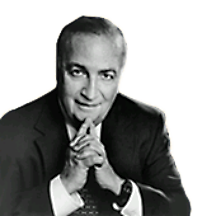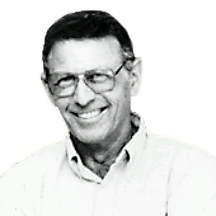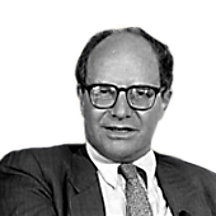Baruj Benacerraf was born at Caracas, Venezuela in 1920. He begins his autobiography with these words:
“I have a strong feeling of identity with my cultural heritage, which may have molded much of my personality. I am of Spanish-Jewish, Sephardic, ancestry. My father, Abraham, was born in Tetuan, Morocco, when it was a Spanish colony, sometime in the last century… My father’s family, as well as my maternal ancestors, who also originated from Tetuan before they move to Sidi-Bel-Abbes in French Algeria, lived in Tetuan, probably for centuries after they moved across the channel from Spain at the time of the Spanish Inquisition… “Money lender”, a traditional family profession… may explain the true meaning of our name. ‘Ben’ means ‘son’ in both Hebrew and Arabic and ‘Seraph’ is, indeed, the word for money changer in Arabic. As for myself, I prefer the fantasy that the real root of my name is the Hebrew word ‘Seraphim’… my full name in Hebrew means, therefore, “be blessed, son of the angel”.
His parents emigrated to Venezuela where his father prospered in a family import-export business. By the time Baruj reached his 5th birthday, they moved to Paris where he lived and studied until completing high school. On the eve of World War 2, his father who had sensed the coming danger decided to emigrate to the USA. There Baruj Benacerraf graduated in the University Columbia and the Medical College of Virginia, in Richmond and became an American citizen. On March 1943, he married Annette Dreyfus, a Jewish girl from a family who fled from Germany at the beginning of the war.
The story that began more than forty years ago with the identification of the first transplantation antigen in a mouse, culminated in 1980, in the award of the Nobel Prize in Physiology or Medicine to three immunologists, Baruj Benacerraf, Jean Dausset and George Snell “for their discoveries concerning genetically determined structures on the cell surface that regulate immunoligical reactions”.
They identified and observed the function of histocompatibility antigens. These antigens induce the immune system to reject a transplant. Their discovery led to the matching of transplant tissues between donor and recipient to minimize the extent of rejection of the transplanted tissue by the immune system of the recipient. Although the use of histocompatibility antigens for transplants is very important, it is unnecessary for most of the population. If such is the case, what role do these antigens play in our daily lives? This subject has been researched by Baruj Benacerraf who showed that the genes of the major histocompatibility complex (MHC) regulate the mutual relationship between the cells of the immune system required to produce an immune reaction.
At the outset of the investigation, Benacerraf showed that guinea pigs have genes known as Ir (immune response) genes that allow them to produce antibodies in reaction to certain antigens. Subsequently, Hugh McDevitt of Stanford University and Michael Sela of the Weizmann Institute of Science discovered similar genes in mice. McDevitt showed that these genes are located in the genome of the mouse in chromosome 17 in the MHC region in the H-2 gene complex, known as IR. In the HLA complex in man (similar to the H-2 in mice) the IR genes are located in chromosome 6 in the HLA-D region.
In conjunction with David Katz, Benacerraf demonstrated that T and B lymphocytes cooperate to produce antibodies against an antigen only if they have identical genes located in the H-21 region of their MHC. Later, it was seen that helper T cells, B cells, macrophages and antigen-presenting cells all cooperate to produce an immunological reaction to a foreign antigen only if they have identical H-21 genes.
According to Benacerraf, regulating immune system reactions is a complicated affair. The only system similar to it in complexity is the nervous system. However, he feels that we are beginning to understand the mechanism by which the immune system can distinguish between a self-antigen and a foreign antigen.
his discovery led to the matching of transplant tissues between donor and recipient.






